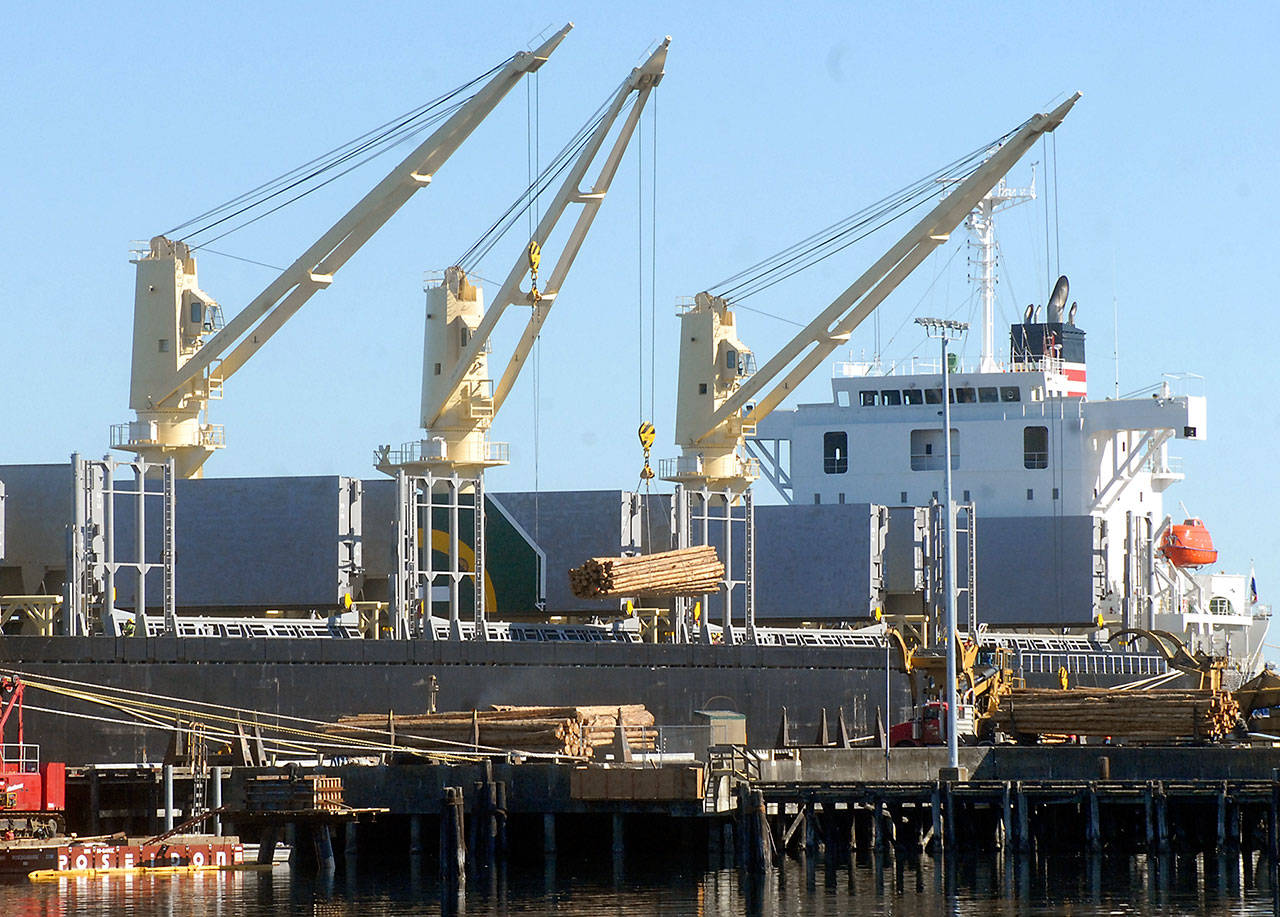PORT ANGELES — The Port of Port Angeles’ status quo $8.28 million draft operating budget for 2018 includes $150,000 for dredging and foresees a continuation of end-of-2017 log yard activity.
It also dispenses a 2.3 percent pay increase to port employees.
There’s no more consulting and special projects funding for the Composite Recycling Technology Center, housed in a port building upgraded with $4 million of county, state and federal grants and $300,000 committed by the port, according to a draft spending plan presented to port commissioners in its first iteration at their meeting Monday.
Funding for $1.23 million in economic development services for the CRTC was spread evenly over 2016 and 2017 but as pledged by port commissioners was absent from the proposed spending plan.
Dave Walter, CEO of the CRTC, said Tuesday the end of funding was not a surprise.
“I told the port we are fine, we do not need any more money,” he said.
“We are going to be self-sufficient in 2018.
“It’s a matter of us doing what we said we are going to do.”
The absence of CRTC funding would contribute to a drop in the port spending related to consulting and special projects in 2018.
It would fall from $1.28 million in 2017 to $680,000 next year.
That left broker services at $85,000 and marine trades development assistance at $75,000 as the largest single expenditures in the consultant-special projects category.
The $8.28 million spending plan for 2018 compares with $8.46 million for 2017.
The commissioners have not decided whether the budget will be fueled with a 1 percent property tax increase totaling about $14,000 that would be allowed by law without consent by voters.
The budget includes $150,000 for dredging at Terminal 3, which Executive Director Karen Goschen said Monday in a later interview was an additional, important expense for next year.
“They’re taking off some high points” in the sea floor near the terminal, she said.
“It hasn’t been dredged in 40 years, and over time, it has built up.
“Vessels keep getting bigger and bigger and need a deeper draft.”
Log-yard activity is expected to increase from $1.74 million projected revenue in the 2017 budget to $2.33 million projected for 2018.
Marine terminal cargo in 2017 was projected at 72 million board feet but will be about 93 million board feet by the end of the year, with three additional cargo vessels arriving this fourth quarter.
The budget anticipates that $2.26 million in actual log yard revenue will accrue by the end of 2017, an amount that is a touch more than the 2018 projection of $2.33 million.
“If you have a really good year, that doesn’t mean that particular performance will dictate what the future holds,” Mike Nimmo, marine terminal manager, said Wednesday.
“It’s a good revenue stream for us.
“It’s just some of the things we do that make our log yard viable and allows us to keep our log yard on the waterfront.
“This is a prime example that these folks have alternate markets and viability in markets.”
Revenue for 2018 will include three wood-chip vessels that will be loaded in Port Angeles for destinations in Asia, Nimmo added.
Nimmo said at the meeting Monday that he’s expecting more barge revenue next year than in 2017.
That’s due in part to a joint venture that will begin in October between Southport Forest Products LLC of Coos Bay, Ore., and Atlanta-based Georgia Pacific to barge logs from Canada to Port Angeles to Coos Bay.
Barges also could originate in Port Angeles and Vancouver, B.C., and go straight to Coos Bay, Nimmo said Wednesday.
Goschen said in the later interview that some wood from Canada was destined for Port Angeles hardwood.
The additional barging began in 2017, but 2018 will offer the first full year.
“In general, barging activity has increased,” she said, citing loads to Interfor U.S. Inc. west of Port Angeles, Port Townsend Paper Co. and Port Angeles Hardwood.
Residents sometimes assume that log-yard logs are all intended for export, Goschen said.
“Quite a bit of it is for local businesses as well,” she said.
The budget also includes a 2.3 percent wage increase for 42.3 full-time-equivalent positions, or 55 employees.
The increase is based on the Consumer Price Index for cities with less than 1.5 million people in the western U.S.
It covers non-represented and represented employees and would cost the port $46,417 in 2018.
Proposed capital expenditures of $6.9 million that are separate from the operating budget include $250,000 for Marine Trades Industrial Park site development for 2018 that would increase to $2.5 million in 2019 and $3.5 million in 2020.
The port anticipates spending $2.5 million in 2010 for a wash-down facility for the site.
Goschen estimated Tuesday that $10.5 million would be spent on the industrial park on the former KPly plywood mill site on Marine Drive over the next several years.
John Nutter, port financial director, said Wednesday a potential anchor tenant for the industrial park has not made a decision on moving to the site.
The budget is on the table for review Oct. 16 and Oct. 23 before residents can comment on it at a Nov. 6 public hearing before commissioners adopt the final version Nov. 21.
The preliminary budget can be reviewed beginning on Page 13 of the agenda packet for Monday’s meeting at http://tinyurl.com/PDN-PortBudget.
________
Senior Staff Writer Paul Gottlieb can be reached at 360-452-2345, ext. 55650, or at pgottlieb@peninsuladailynews.com.

